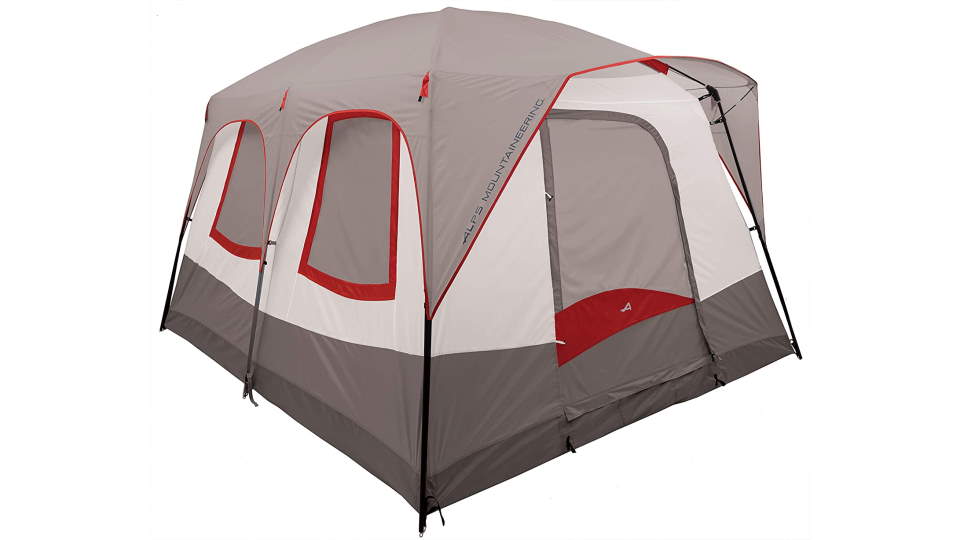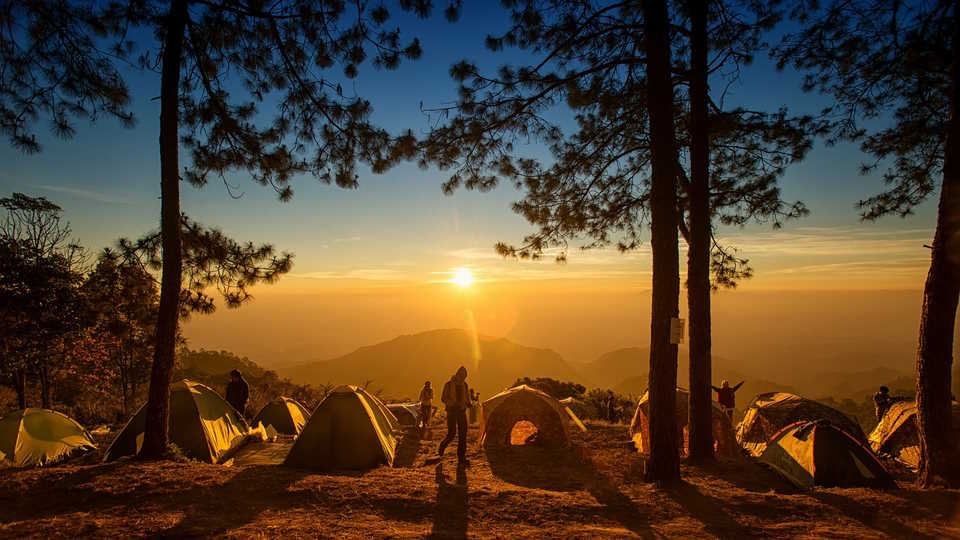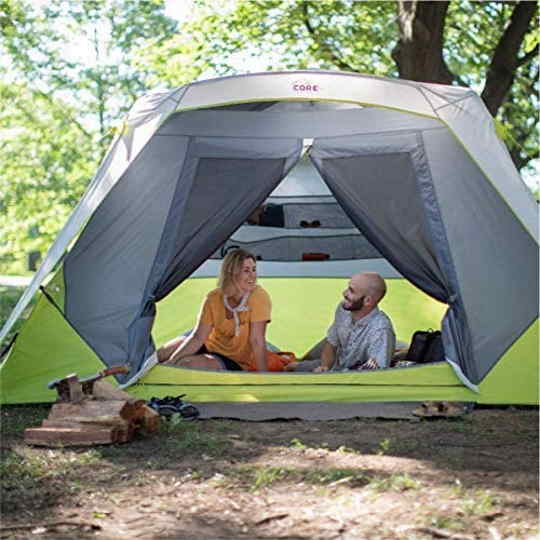Welcome, outdoor enthusiasts and adventure seekers! There’s nothing quite like setting up camp in the great outdoors, surrounded by nature’s beauty. However, sometimes our trusty tents can fall victim to mold growth, posing potential health hazards and compromising their integrity. If you’ve discovered mold on your tent, fear not – we’ll guide you through the steps to effectively clean and restore your tent to its former glory. We’ll address common concerns such as whether mold can be washed out of a tent, the potential damage mold can cause, and the possibility of saving a moldy tent. So, if you’re ready to learn about how to banish mold from your beloved shelter, keep reading!
Introduction

Mold can be a frustrating problem for campers, as it not only affects the appearance of the tent but also poses potential health hazards. However, there is no need to panic if you discover mold on your beloved tent. With the right techniques and a little bit of elbow grease, you can effectively clean and restore your tent to its former glory. We will guide you through the step-by-step process of how to clean a tent with mold, ensuring that you can continue to enjoy your outdoor adventures without any worries.
Step 1: Assessment and Preparation
The first step in tackling mold on your tent is to assess the extent of the damage. Inspect the entire tent, including the inside and outside surfaces, for any signs of mold growth. Once you have identified the affected areas, gather the necessary cleaning supplies. This typically includes a mild detergent, warm water, a soft-bristle brush or sponge, and a large bucket or tub for mixing the cleaning solution.
Step 2: Spot Treatment
Before diving into a full cleaning, start by spot treating the visible mold patches on your tent. Create a solution by mixing a small amount of mild detergent with warm water. Dip a soft-bristle brush or sponge into the solution and gently scrub the moldy areas. Take care not to scrub too vigorously, as this could damage the tent fabric.
Step 3: Deep Cleaning
After spot treating the mold patches, it’s time to give your tent a deep cleanse. Fill a large bucket or tub with warm water and add a mild detergent according to the manufacturer’s instructions. Submerge the entire tent in the solution, ensuring that it is fully immersed. Gently agitate the tent to loosen any remaining mold or dirt. Allow the tent to soak for about 10-15 minutes.
Step 4: Rinse Thoroughly
Once the tent has soaked, remove it from the cleaning solution and thoroughly rinse it with clean water. Make sure to rinse both the inside and outside of the tent to remove any excess detergent or residue. You can use a hose or a clean bucket of water for this rinsing process.
By following these steps, you can effectively clean a tent with mold and prevent any further damage. Remember to always allow your tent to fully dry before storing it to avoid any additional mold growth. With proper maintenance and regular cleaning, you can ensure that your tent remains mold-free and ready for your next outdoor adventure.
Can You Wash Mold Out of a Tent?

When it comes to camping, one of the essential items is a tent. A tent provides shelter and protection from the elements, allowing you to enjoy the great outdoors while still having a comfortable place to sleep. However, over time, tents can become dirty and may even develop mold. Mold can be a serious problem as it not only looks unsightly, but it can also pose health risks. So, can you wash mold out of a tent? Let’s explore this question and find out.
Mold is a type of fungus that thrives in damp and humid environments. It can easily grow on various surfaces, including tents. When a tent gets wet and is not properly dried, it provides the perfect conditions for mold to develop. The presence of mold on a tent can be a cause for concern as it can lead to respiratory issues and other health problems.
So, can you wash mold out of a tent? The short answer is yes, it is possible to wash mold out of a tent. However, it is important to note that washing alone may not completely eliminate the mold spores. Mold spores can be stubborn and may require additional steps to ensure they are completely eradicated. It is also worth mentioning that the effectiveness of washing will depend on the severity of the mold infestation and the type of materials used in the tent.
Does Mold Damage a Tent?

When it comes to camping, a tent is an essential item to ensure a comfortable and safe outdoor experience. However, one common issue that campers may encounter is the growth of mold on their tents. Mold not only creates an unpleasant visual appearance, but it can also have potential health risks. So the question arises: does mold damage a tent? Let’s delve into this topic and explore the impact of mold on tents.
Mold is a type of fungus that thrives in warm and humid environments, making tents susceptible to its growth, especially when stored improperly or when exposed to moisture for extended periods. The presence of mold on the surface of a tent can lead to various problems. First and foremost, mold can deteriorate the fabric of the tent, causing it to weaken and become more prone to tearing or ripping. This can compromise the tent’s structure and ultimately render it unusable.
Furthermore, mold can also affect the overall performance of a tent. The spores released by mold can contaminate the air inside the tent, leading to respiratory issues and allergies for the occupants. In severe cases, mold exposure can even cause more serious health problems. Moreover, the growth of mold can create an unpleasant odor that is difficult to eliminate, making the camping experience less enjoyable.
- To prevent mold damage to your tent, it is crucial to take proactive measures. Firstly, always ensure that your tent is completely dry before packing it away. Moisture trapped inside the tent can provide an ideal environment for mold growth.
- When setting up your tent, choose a location that is well-ventilated and not prone to excessive moisture. Avoid pitching your tent near bodies of water or in low-lying areas where water can accumulate.
- Regularly inspect and clean your tent to remove any dirt or debris that may contribute to mold growth. Use mild soap and warm water to gently scrub the surface of the tent, paying extra attention to areas that are prone to moisture buildup. After cleaning, make sure to thoroughly dry the tent before storing it.
| Steps | Details |
|---|---|
| 1 | Ensure tent is completely dry before packing |
| 2 | Pitch tent in well-ventilated, dry location |
| 3 | Regularly clean tent to remove dirt and debris |
| 4 | Thoroughly dry tent before storage |
Can a Moldy Tent Be Saved?

When you stumble upon a moldy tent that has been stored away for too long, you may start to wonder if it can be salvaged. Nobody wants to throw away a perfectly good tent, especially if it has sentimental or financial value. So, the question remains – how can you save a moldy tent?
The first step is to assess the extent of the mold damage. Inspect your tent thoroughly to determine how severe the mold growth is. If it’s a small patch or limited to a specific area, there may be hope for cleaning and saving your tent. However, if the mold has spread extensively or has deeply penetrated the fabric, it may be challenging to restore the tent to its former glory.
If the mold growth is minimal, try cleaning your tent with the right techniques and products. Start by setting up your tent in a well-ventilated area, preferably outdoors. Mix a solution of warm water and mild soap, and using a soft-bristled brush or sponge, gently scrub the affected areas. Avoid using harsh chemicals or bleach as they can damage the fabric. Rinse your tent thoroughly and allow it to air dry completely before packing it away.
If cleaning doesn’t work, consider using specialized mold-removal products. There are various commercial mold-removal solutions available in the market specifically designed for tents and outdoor gear. Follow the instructions provided by the manufacturer carefully and ensure proper ventilation during the process. Always test the product on a small, inconspicuous area of the tent first to avoid any potential damage or discoloration.
If all else fails, seek professional assistance. If the mold growth is extensive or you are unsure about how to properly clean the tent, it’s best to entrust the task to professionals. Outdoor gear cleaning services or specialized tent repair shops have the knowledge, expertise, and equipment to tackle stubborn mold and restore your tent to its original condition.
Remember, prevention is always better than cure. To avoid dealing with moldy tents in the future, take proper care of your tent during use and storage. Ensure it is completely dry before storing it, as moisture can lead to mold growth. Use a rainfly or waterproof cover to protect your tent from rain and damp conditions. Regularly inspect and air out your tent even when not in use to prevent any mold or mildew buildup.
With proper care and timely action, a moldy tent can often be saved. However, it’s crucial to act swiftly and thoroughly assess the extent of the damage. By following the right cleaning techniques or seeking professional help, you can often revive your tent and continue enjoying outdoor adventures with peace of mind.
What Kills Mold on a Tent?

Mold can be a pesky problem, especially when it comes to outdoor gear like tents. Not only can it cause unpleasant odors, but it can also affect the structural integrity of your tent. If you’ve noticed mold growing on your tent, it’s essential to take action and get rid of it promptly. In this blog post, we will explore effective methods and what kills mold on a tent to help you restore your beloved camping equipment.
First and foremost, prevention is key when it comes to dealing with mold on your tent. Properly storing and maintaining your tent can greatly reduce the chances of mold growth. Always ensure that your tent is completely dry before storing it, as moisture is a breeding ground for mold. Additionally, store your tent in a cool and dry place, away from direct sunlight, as UV rays can also contribute to mold formation.
- Cleaning with Vinegar Solution: Vinegar is a natural and affordable solution for killing mold. Mix equal parts of white vinegar and water in a spray bottle. Spray the affected areas generously and let it sit for about an hour. Then, gently scrub the moldy spots with a soft brush or sponge. Rinse the tent thoroughly with clean water and allow it to dry completely before packing it up.
- Bleach and Water Mixture: If the mold infestation is severe, using a bleach solution can be effective. Mix one part bleach with ten parts water in a spray bottle. Carefully spray the affected areas, ensuring good ventilation. Let the solution sit on the mold for 5-7 minutes and then scrub the tent gently. Rinse thoroughly and dry the tent thoroughly to prevent any bleach residue.
- Commercial Mold Cleaners: There are various mold-cleaning products available on the market that are specifically designed to kill and remove mold. These cleaners often come in spray or liquid form and contain mildewcides or fungicides. Follow the instructions provided by the manufacturer carefully to ensure safe and effective use on your tent.
It’s important to note that when using any cleaning solution, test it on a small, inconspicuous area of the tent first to check for any adverse reactions. It’s also crucial to read and follow the manufacturer’s instructions before using any cleaning products on your tent.
Remember, prevention is always better than cure. Regularly inspect your tent for any signs of mold or mildew growth. Promptly address any areas where moisture has accumulated or where mold may be forming. By taking proper care of your tent and addressing mold issues promptly, you can extend its lifespan and ensure a more pleasant camping experience.




